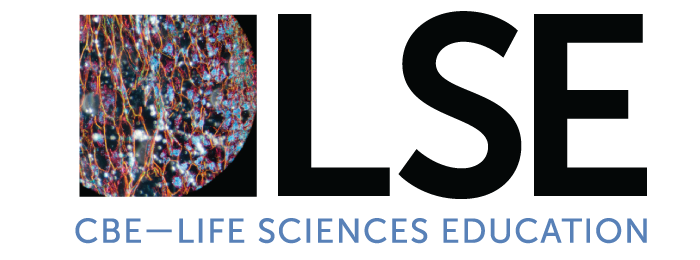Benefits, Definitions, and Underpinnings
Group work: Students work in small groups on shared tasks to achieve common learning goals.
Cooperative learning: Group work in which students collaborate on shared tasks, often while playing distinct roles, to reach shared learning goals that are defined by the instructor.
Collaborative learning: Group work that is relatively unstructured by the instructor and involves group members negotiating goals, defining problems, and developing procedures to produce a common product.
Positive interdependence: Students perceive that individual success is enhanced by the success of other group members and the group as a whole.
Promotive interaction: individuals help other group members’ efforts to achieve group goals
- Group work that promotes students’ collaboration to achieve shared learning goals has been shown to improve student achievement, persistence, and attitudes toward science. Group work can provide opportunities for students to explain their reasoning to each other and to themselves, thereby promoting the cognitive restructuring that leads to learning, as well as opportunities for formative assessment and feedback with peers to shape that learning. It also provides students an avenue to incorporate diverse viewpoints and to develop teamwork and communication skills. While group work can provide many benefits, it is not a panacea; some contexts and tasks are more appropriate for individual work.
- There are benefits for both formal and informal group work. In formal group work, students work in persistent groups for an extended period on a collaborative project. In informal group work, ad hoc groups work together on an in-class problem or question for a few minutes to a full class period. Formal group work requires more planning and coordination, but can help students work together to reach important course objectives, while informal group work is easy to incorporate into classes of any size and any space.
 Tanner K, Chatman LS, Allen D (2003). Approaches to Cell Biology Teaching: Cooperative Learning in the Science Classroom—Beyond Students Working in Groups. LSE 2, 1-5. Cooperative learning is defined in contrast to competitive and individualistic learning and provides benefits ranging from increased academic achievement to improved attitudes toward science. This article describes five essential elements of effective cooperative learning and specific approaches that instructors can take to use cooperative learning in their classes.
Tanner K, Chatman LS, Allen D (2003). Approaches to Cell Biology Teaching: Cooperative Learning in the Science Classroom—Beyond Students Working in Groups. LSE 2, 1-5. Cooperative learning is defined in contrast to competitive and individualistic learning and provides benefits ranging from increased academic achievement to improved attitudes toward science. This article describes five essential elements of effective cooperative learning and specific approaches that instructors can take to use cooperative learning in their classes.
 Wilson KJ, Brickman P, and Brame CJ (2018). Evidence Based Teaching Guides: Group Work. LSE. This article introduces this teaching guide presenting research studies and resources related to group work. Links to key articles are accompanied by condensed summaries organized by teaching challenges, and actionable advice is provided in an instructor checklist. In addition to describing features of the guide, this essay identifies areas for which further research is warranted.
Wilson KJ, Brickman P, and Brame CJ (2018). Evidence Based Teaching Guides: Group Work. LSE. This article introduces this teaching guide presenting research studies and resources related to group work. Links to key articles are accompanied by condensed summaries organized by teaching challenges, and actionable advice is provided in an instructor checklist. In addition to describing features of the guide, this essay identifies areas for which further research is warranted.
 Johnson DW, Johnson RT, Smith KA (2014). Cooperative learning: Improving university instruction by basing practice on validated theory. Journal on Excellence in College Teaching 25, 85-118. This review describes cooperative learning, its basis in social interdependence theory, and the conditions that produce cooperation: positive interdependence, individual accountability, promotive interaction, social skills, and group processing. The authors provide a meta-analysis of university studies comparing efficacy of cooperative, competitive, and individualistic learning, reporting moderate to large benefits of cooperative learning for student achievement and other measures. The authors also provide information about implementing this pedagogy, including descriptions and suggestions for formal and informal cooperative learning. They define formal cooperative learning as students working together toward common learning goals on common assignments, where the learning goals, assignments, needed skills, and size and structure of the group are defined by the instructor, and where the interaction lasts from a single class period to multiple weeks. They define informal cooperative learning as ad-hoc student groups working together toward a common learning goal for a shorter period (a few minutes to a class period). The authors conclude by describing ways in which cooperative learning can serve as the basis for other forms of active learning.
Johnson DW, Johnson RT, Smith KA (2014). Cooperative learning: Improving university instruction by basing practice on validated theory. Journal on Excellence in College Teaching 25, 85-118. This review describes cooperative learning, its basis in social interdependence theory, and the conditions that produce cooperation: positive interdependence, individual accountability, promotive interaction, social skills, and group processing. The authors provide a meta-analysis of university studies comparing efficacy of cooperative, competitive, and individualistic learning, reporting moderate to large benefits of cooperative learning for student achievement and other measures. The authors also provide information about implementing this pedagogy, including descriptions and suggestions for formal and informal cooperative learning. They define formal cooperative learning as students working together toward common learning goals on common assignments, where the learning goals, assignments, needed skills, and size and structure of the group are defined by the instructor, and where the interaction lasts from a single class period to multiple weeks. They define informal cooperative learning as ad-hoc student groups working together toward a common learning goal for a shorter period (a few minutes to a class period). The authors conclude by describing ways in which cooperative learning can serve as the basis for other forms of active learning.
 Johnson DW, Johnson RT (2009). An Educational Psychology Success Story: Social Interdependence Theory and Cooperative Learning. Educational Researcher 38, 365-379. Johnson and Johnson provide a review that summarizes social interdependence theory and the essential elements of cooperation. They summarize the literature on structuring positive interdependence; promoting individual accountability and personal responsibility; encouraging promotive interaction; and developing students’ social and group processing skills. The authors also review contexts in which competitive or individualistic learning are effective learning approaches and provide recommendations for operationalizing social interdependence theory in the classroom.
Johnson DW, Johnson RT (2009). An Educational Psychology Success Story: Social Interdependence Theory and Cooperative Learning. Educational Researcher 38, 365-379. Johnson and Johnson provide a review that summarizes social interdependence theory and the essential elements of cooperation. They summarize the literature on structuring positive interdependence; promoting individual accountability and personal responsibility; encouraging promotive interaction; and developing students’ social and group processing skills. The authors also review contexts in which competitive or individualistic learning are effective learning approaches and provide recommendations for operationalizing social interdependence theory in the classroom.
 Springer L, Stanne ME, Donovan SS (1999). Effects of Small-Group Learning in Science, Mathematics, Engineering, and Technology: A Meta-Analysis. Review of Educational Research 69, 21-51. This article describes the relationships between cooperative and collaborative learning and three theoretical perspectives on the benefits group work can provide: a motivational perspective, an affective perspective, and a cognitive perspective, each of which can provide a rationale for instructional decisions surrounding group work. The authors performed a meta-analysis of 39 reports of small-group learning in postsecondary STEM courses from 1980 to c. 1999, finding a significant positive main effect of small-group learning on achievement, persistence, and attitudes. They examined the effects of small-group learning based on gender and racial or ethnic composition of the group, finding little evidence that gender composition altered outcomes but observing greater benefits for groups composed primarily or exclusively of African-American or Latinx students. Although the authors note that data were limited , they did not observe a difference among cooperative, collaborative, and mixed small group learning.
Springer L, Stanne ME, Donovan SS (1999). Effects of Small-Group Learning in Science, Mathematics, Engineering, and Technology: A Meta-Analysis. Review of Educational Research 69, 21-51. This article describes the relationships between cooperative and collaborative learning and three theoretical perspectives on the benefits group work can provide: a motivational perspective, an affective perspective, and a cognitive perspective, each of which can provide a rationale for instructional decisions surrounding group work. The authors performed a meta-analysis of 39 reports of small-group learning in postsecondary STEM courses from 1980 to c. 1999, finding a significant positive main effect of small-group learning on achievement, persistence, and attitudes. They examined the effects of small-group learning based on gender and racial or ethnic composition of the group, finding little evidence that gender composition altered outcomes but observing greater benefits for groups composed primarily or exclusively of African-American or Latinx students. Although the authors note that data were limited , they did not observe a difference among cooperative, collaborative, and mixed small group learning.
 Slavin RE (1996). Research on cooperative learning and achievement: What we know, what we need to know. Contemporary Educational Psychology, 21, 43-69. Slavin discusses several theoretical perspectives that explain the achievement effects of cooperative learning: motivational, social cohesion, developmental, and cognitive elaboration, reviewing relevant empirical support and describing a way to reconcile these as complementary points of view. Slavin also identifies group goals and individual accountability as essential elements for cooperative learning to result in achievement gains, providing detailed review of previous studies investigating the role of this question and identifying tasks that may not require these elements.
Slavin RE (1996). Research on cooperative learning and achievement: What we know, what we need to know. Contemporary Educational Psychology, 21, 43-69. Slavin discusses several theoretical perspectives that explain the achievement effects of cooperative learning: motivational, social cohesion, developmental, and cognitive elaboration, reviewing relevant empirical support and describing a way to reconcile these as complementary points of view. Slavin also identifies group goals and individual accountability as essential elements for cooperative learning to result in achievement gains, providing detailed review of previous studies investigating the role of this question and identifying tasks that may not require these elements.









